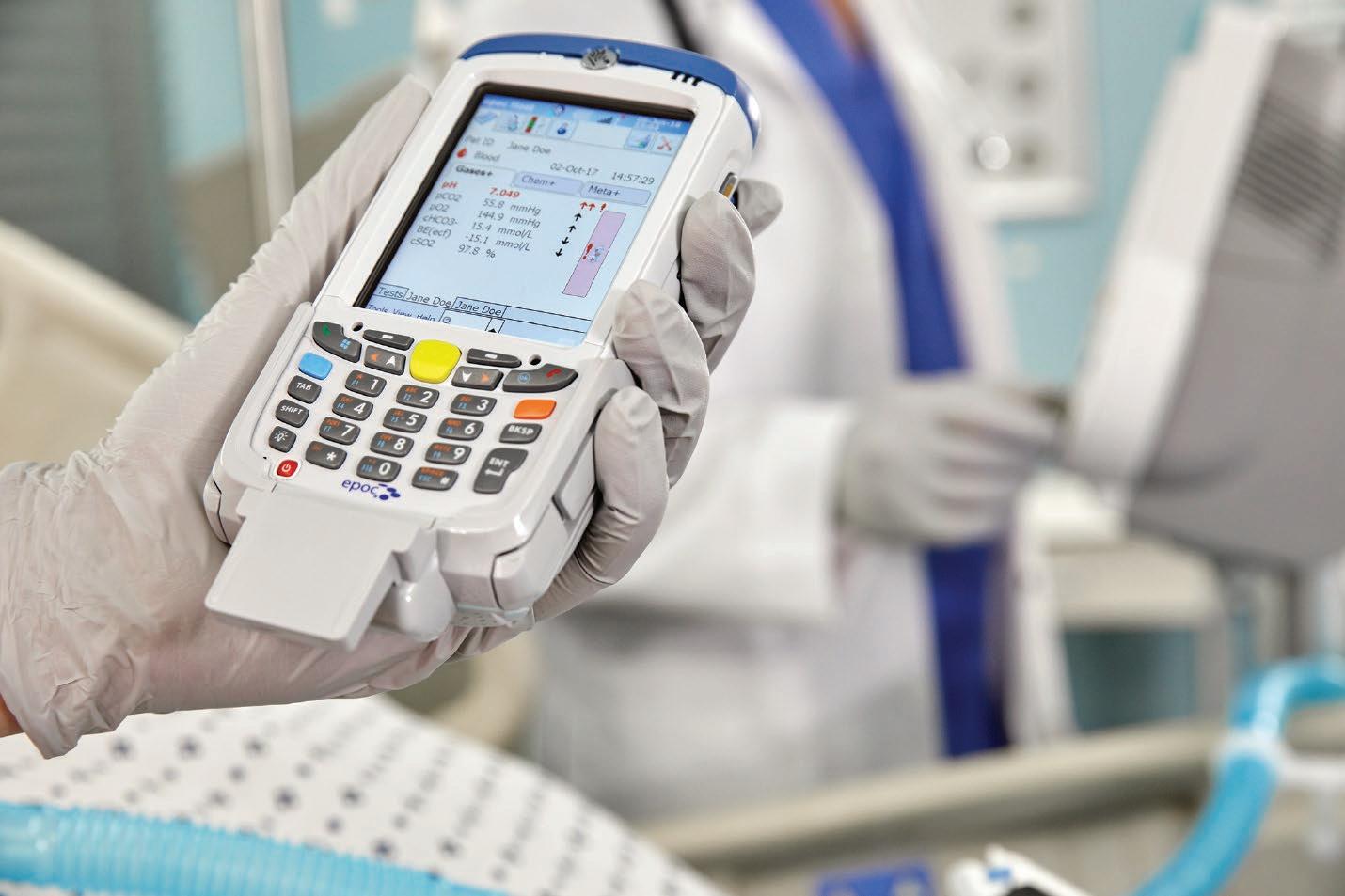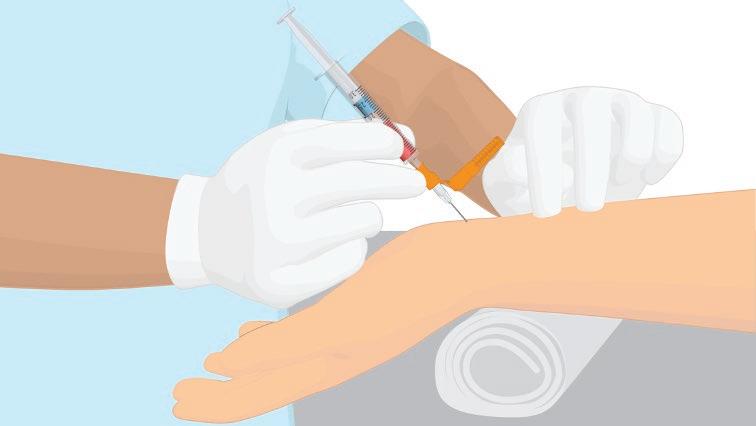IMPROVING THE DIAGNOSIS AND MONITORING OF CRITICALLY ILL PATIENTS AND THE ROLE OF BLOOD GAS TESTING
Foreword T
he levels of gases, electrolytes, and
of clinical settings, allowing improved clinical decision-
metabolites in circulation influence the
making. Over the last four decades, technological
equilibrium between oxygen delivery and tissue
advances have translated into improvements in the
demand, as well as the acid�base balance of the
performance and design of blood gas analyzers.
human body. Deviations in this equilibrium manifest
Multiple manufacturers offer analyzers with expanded
in numerous diseases affecting the respiratory,
testing menus for use in clinical laboratories or at the
cardiovascular, and metabolic systems. Blood
point-of-care (PoC). Healthcare providers have a
gas analysis evaluates abnormalities in the degree
range of options available to meet their demands
of pulmonary gas exchange and metabolism,
for accuracy, safety, and convenience. The third
including the adequacy of ventilation, oxygenation,
article in this report discusses some of the key
and acid-base status. The values of carbon dioxide
metrics to use in selecting a blood gas analyzer
and oxygen are expressed as the partial pressure
for point-of-care or laboratory settings. Improved
of carbon dioxide (PaCO2) and the partial pressure
clinical informatics capabilities enable healthcare
of oxygen (PaO2).
professionals to collect, store, and analyze test data
The first article in this report is authored by Professor
in a secure environment, providing timely access
Daniel Martin OBE. Professor Martin is an Intensive
to data for actionable clinical insights. This article
Care Consultant at the Royal Free Hospital in London,
also highlights the importance of cybersecurity in
U.K. He describes the critical role of blood gas testing
safeguarding patient data and the broader informatics
in the management and monitoring of COVID-19
systems of healthcare organizations. The final article
patients in intensive care settings. The second article
focuses on clinical guidelines and recommendations
further discusses the utility of blood gas analysis in
for blood gas analysis, including clinical indications
the diagnosis and management of critically ill patients
and guidance for sampling, handling, and analysis
and describes measures to meet the global demand
of blood gas specimens.
for blood gas testing. Blood gas analysis enables healthcare professionals to evaluate patients across a range
Dr Sophie Laurenson Editor
Dr. Sophie Laurenson is a scientist and social entrepreneur. She obtained a Ph.D. in Oncology (Biophysics / Biochemistry) from the University of Cambridge in 2007 and has worked in industry and academia for 17 years. Currently, she is the Founder and Managing Director of Limeburners Bay International AG, developing medical technology for resource-limited settings.
2 | WWW.HOSPITALREPORTS.EU







